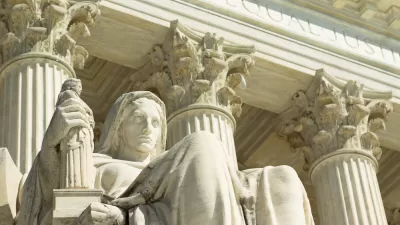One of my prerogatives teaching a landscape design studio exploring public space at UCLA Extension is being able to pick the class projects with which to challenge the students. Time for them to get real and get down, walk the streets, wallow in the sites; to see, hear, smell, taste and touch. Me and my colleague, the loquacious landscape legend Rhett Beavers, are in effect the clients, the students the professional consultants, and the particular projects our whim, no matter how it might be a sugar coated pedanticism in the school’s offering of an urban laboratory.
One of my prerogatives teaching a landscape design studio exploring public space at UCLA Extension is being able to pick the class projects with which to challenge the students. Time for them to get real and get down, walk the streets, wallow in the sites; to see, hear, smell, taste and touch.
Me and my colleague, the loquacious landscape legend Rhett Beavers, are in effect the clients, the students the professional consultants, and the particular projects our whim, no matter how it might be a sugar coated pedanticism in the school's offering of an urban laboratory.
The intent of the course is to explore, encourage and liberate the use of public space - the more an unappealing maze in an underserved community, the more the challenge. As blessed by an enlightened department director, Stephanie Landregan, the exercise has been labeled by peripatetic students, bureaucrats and community activists, "guerilla planning," as in subversive.
Over the past several years we have challenged a parade of young and mid-career professionals in quest of a landscape architecture license to develop plans for a variety of derelict, fringe and generally forlorn spaces. This has included the grist of gritty sidewalks, unfriendly streets, forbidding and trashed vacant lots, and abandoned alleys and rail lines.
For bloodied academic veterans such as Beavers and me, this has been an invigorating alternative to the capricious abstracted curriculum of many of our architecture and design schools under the sway of self aggrandizing faculty and administrators, and their favored star architects, patting and scratching each other's back while creaming the top off of the schools' coffers.
In contrast for us in our less pretentious realm, occasionally a project is presented that goes beyond the usual parameters and expectations. That is what happened this Spring semester, when one day in class while discussing precedents, a student, Linda Whitney, revealed that she recently worked on a vest pocket water conservation venture in a planned unit development east of San Diego where she lives.
Though not the designated class assignment, which was reimagining an abandoned railway line slicing through the back lots of Highland Park, north of downtown Los Angeles, Whitney's project certainly was in the spirit of the curriculum.
Making it particularly engaging is that the student-inspired minimal maintenance project is very real, a 1.4-acre site owned by the EastLake III Homeowners Association that had been an unsightly miscellany of thirsty plants in need of monthly maintenance, serving no purpose. For years it sat in sight but out of mind on a hillside adjoining a community clubhouse in the sprawling 3,100 single-family unit development on the edge of the city of Chula Vista.
All the more praiseworthy in addition to being sustainable, the project features a native wildlife habitat to support a strained flyover bird population, in particular the Western Bluebird. Created, in effect, has been a bird sanctuary where such sites friendly to our feathered friends have been shrinking due to the dogged spread of residential development and recent wildfires.
And you cannot get more real these days in California than contending with the continuing encroachment on the natural environment by urban sprawl. That this is not just another theoretical study and actually involved broad community support makes it a compelling construct.
In addition to the host homeowners association embracing the project, it also was supported by the water district and encouraged by the San Diego Audubon Society. It was the Society that initially engaged Whitney, under a program labeled "TogetherGreen" to promote public conservation awareness. She had been recommended to the society by the district after scoring an award redesigning her own modest 3,000 square foot landscape to be water tolerant.
The award led to recognition by the homeowners association, and a search for a larger demonstration site that involved a host of resident volunteers, local businesses and city of Chua Vista department of conservation and environmental services, orchestrated by a now committed Whitney. Also lending support was the University of California Cooperative Extension garden program. The hope is that the project as packaged by Whitney can be emulated by other water districts and homeowner associations.
As for Whitney, she has been encouraged to pursue the usual raft of academic awards, though the project varies from the particulars of the class. But as a guerilla planner, I of course tend to bend the curriculum and contexts whenever I can to make a project relevant. How else as a teacher am I ever going to keep on learning, if not extended and excited by committed students?

Manufactured Crisis: Losing the Nation’s Largest Source of Unsubsidized Affordable Housing
Manufactured housing communities have long been an affordable housing option for millions of people living in the U.S., but that affordability is disappearing rapidly. How did we get here?

Americans May Be Stuck — But Why?
Americans are moving a lot less than they once did, and that is a problem. While Yoni Applebaum, in his highly-publicized article Stuck, gets the reasons badly wrong, it's still important to ask: why are we moving so much less than before?

Using Old Oil and Gas Wells for Green Energy Storage
Penn State researchers have found that repurposing abandoned oil and gas wells for geothermal-assisted compressed-air energy storage can boost efficiency, reduce environmental risks, and support clean energy and job transitions.

Minneapolis Bans Rent-Setting Software
Four cities have enacted restrictions on algorithmic software that can inflate rent costs.

Oakland to Add 244 New EV Chargers
Oakland plans to launch its new charging network at eight locations by the end of 2025.

Jane Goodall Inspires with Message of Hope, Resilience, and Environmental Action
Speaking in Pasadena, Jane Goodall offered a hopeful and inspirational message, urging global compassion, environmental responsibility, and the power of individual action to shape a better future.
Urban Design for Planners 1: Software Tools
This six-course series explores essential urban design concepts using open source software and equips planners with the tools they need to participate fully in the urban design process.
Planning for Universal Design
Learn the tools for implementing Universal Design in planning regulations.
Heyer Gruel & Associates PA
City of Moreno Valley
Institute for Housing and Urban Development Studies (IHS)
City of Grandview
Harvard GSD Executive Education
Salt Lake City
NYU Wagner Graduate School of Public Service
City of Cambridge, Maryland





























